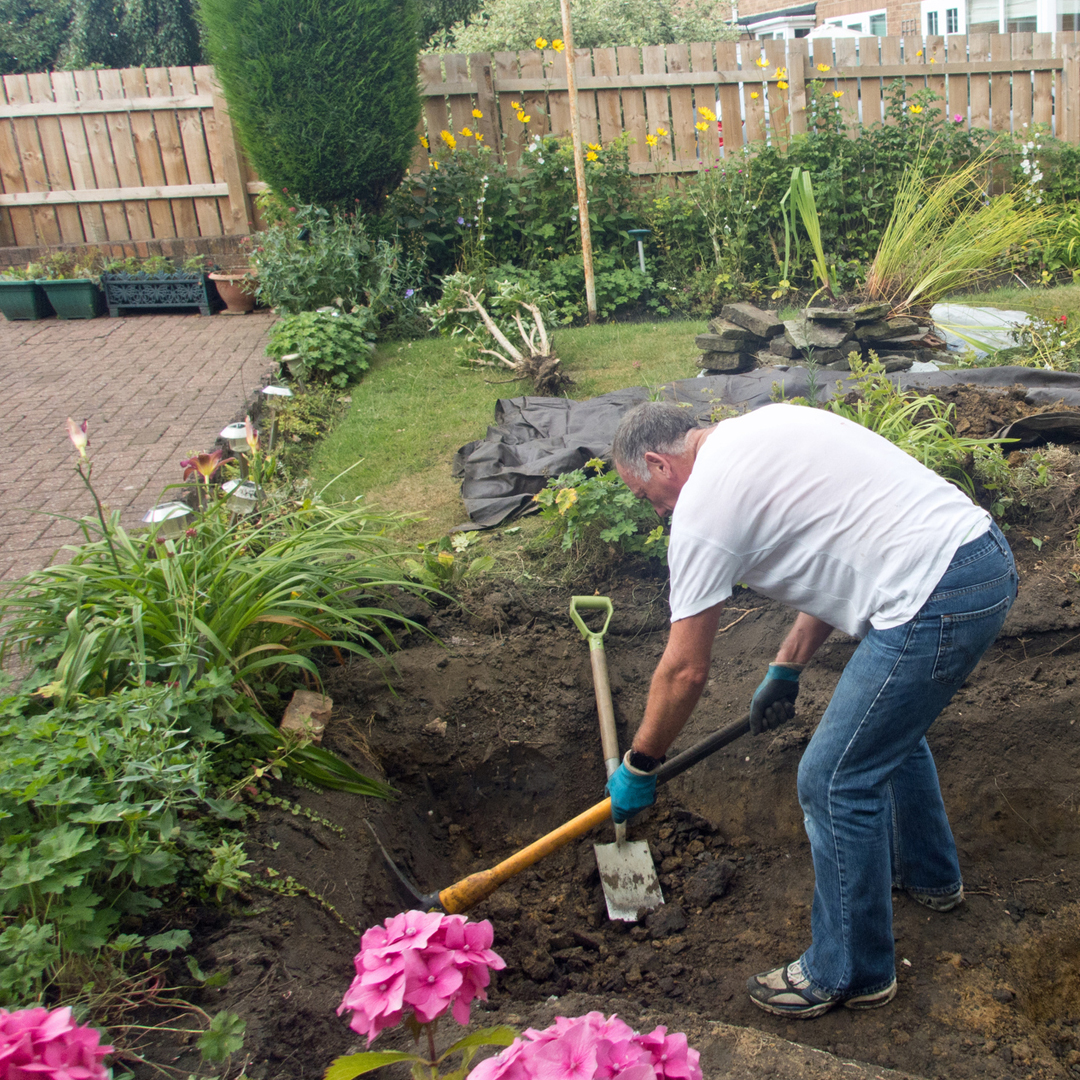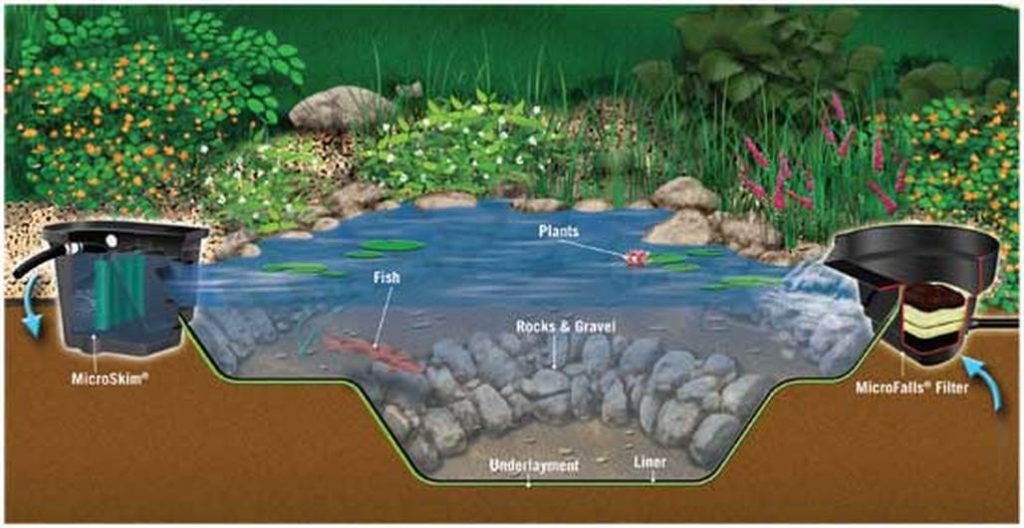A Koi pond should be at least 3 feet deep to provide sufficient water volume for the fish. Koi ponds are a popular addition to gardens, providing both aesthetic beauty and a serene environment.
However, in order to ensure the health and well-being of the Koi fish, it is crucial to pay attention to the depth of the pond. A Koi pond should be at least 3 feet deep, as this provides adequate water volume for the fish to swim comfortably and helps maintain stable water conditions.
A deeper pond also allows the Koi to avoid extreme temperature changes and predators. Additionally, a deeper pond ensures that the fish have enough space for growth, reducing overcrowding and potential stress. By adhering to these guidelines and maintaining the proper depth, you can create a thriving and vibrant Koi pond in your garden.
Importance Of Pond Depth
The depth of a koi pond is crucial for the overall health and well-being of your fish.
Creating A Safe Environment
Adequate pond depth ensures a safe environment for koi fish to thrive.
The pond’s depth should provide enough space for fish to swim freely and avoid predators.
Impact On Fish Health
Proper pond depth directly impacts the health and growth of your koi fish.
Shallow ponds can stress fish and hinder their natural behaviors and growth.

Credit: cartersgarden.wordpress.com
Factors To Consider
Koi pond depth is a crucial factor that directly impacts the health and well-being of your fish. Several key factors need to be considered to determine the optimal depth for your koi pond.
Koi Species And Size
The species and size of your koi fish play a significant role in determining the ideal pond depth. Larger koi species require deeper ponds to thrive,
Ensure the depth is sufficient for the specific species in your pond to enable them to swim and grow comfortably.
Climate And Weather Conditions
Consider the local climate and weather conditions when determining pond depth. Harsh winters may require deeper ponds to prevent freezing,
Ensure that your pond depth can provide adequate insulation and protection for your koi during extreme weather conditions.
Pond Predators
Protect your koi from predators by creating a pond depth that prevents easy access. Deeper ponds can discourage predators like herons,
Raccoons, and cats from preying on your valuable fish, ensuring their safety and security.
Minimum Recommended Depths
When constructing a koi pond, one of the critical considerations is the depth. Adequate depth is essential for the health and well-being of your koi fish. Here, we will explore the minimum recommended depths for koi ponds, as well as the ideal depth to create a thriving aquatic environment for your prized koi.
Ideal Depth For Koi Ponds
The ideal depth for a koi pond is generally between 3 to 4 feet. This depth provides an optimal environment for koi to thrive, as it allows for proper swimming and living conditions. Additionally, a deeper pond helps maintain stable water temperatures, which is crucial for the well-being of koi, especially in extreme weather conditions.
Shallow Vs. Deep Ponds
Shallow ponds, typically less than 3 feet deep, may be suitable for smaller ornamental fish. However, for koi, a deeper pond is highly recommended to support their growth and overall health. Deeper ponds also offer better protection against predators and provide adequate space for koi to exhibit their natural behaviors.
Construction Considerations
When constructing a koi pond, there are several important considerations to keep in mind. From excavating and shaping the pond to adding essential safety features, each step requires careful planning to ensure a successful and functional design. In this section, we will explore the key construction considerations to keep in mind when determining the depth of your koi pond.
Excavating And Shaping The Pond
Excavation is the first crucial step in constructing a koi pond that meets the needs of your fish. Before you begin digging, consider the desired depth of your pond. Generally, a koi pond should be at least three to four feet deep to provide adequate space for the fish to swim and thrive. This depth also helps to maintain a stable water temperature throughout the year, which is essential for the health of your koi.
When excavating, keep in mind that the shape of the pond is equally important. While ponds with irregular shapes may appear more natural, they can make maintenance and cleaning more challenging. Opting for a rectangular or oval shape can make it easier to install filters, pumps, and other equipment, as well as ensure easier access for maintenance tasks.
Adding Safety Features
Ensuring the safety of your koi is paramount when constructing a pond. Installing the right safety features can prevent accidents and protect your fish from potential harm. One key consideration is adding a pond net or cover to prevent predators, such as birds or raccoons, from reaching your koi.
An ideal safety addition to consider is a pond depth marker, which provides a clear indication of the water depth. This helps prevent accidents and ensures that everyone, including children, knows the depth of the water. Additionally, incorporating a shallow ledge or steps within the pond allows the koi to reach different depths while also providing an area for them to take shelter.
In conclusion, when constructing a koi pond, paying attention to the excavation and shaping process as well as incorporating appropriate safety features is crucial. By carefully considering these construction considerations, you can create a beautiful and functional koi pond that promotes the health and happiness of your fish.
Challenges Of Incorrect Depths
Koi pond depths can pose challenges when not executed correctly. Striking the right depth is crucial for the fish’s health and safety, ensuring optimal pond conditions as well as their growth and development.
Stress On Fish
Incorrect depths in a koi pond can lead to significant stress on the fish residing in it. When a pond is too shallow, koi do not have enough space to swim freely and comfortably. Restricted movement can cause stress, leading to decreased appetite and overall poor health. Conversely, if the pond is too deep, the water pressure can become overwhelming, further adding to the stress levels of the fish. Maintaining the optimal depth ensures a stress-free environment where koi can flourish and thrive.Vulnerability To Predators
Predators pose a constant threat to the safety and well-being of koi fish. Having a pond that is inadequately deep can make the fish vulnerable to predators. Shallow waters offer easy access for birds, mammals, and other creatures to snatch the fish. Moreover, a shallower pond lacks hiding spots, leaving koi exposed and defenseless. By maintaining the correct depth, the risk of predation is significantly reduced, providing a safer habitat for your cherished koi. In summary, maintaining the correct depth in a koi pond plays a crucial role in the well-being and safety of the fish. Inadequate depths can result in increased stress levels for the fish and make them more vulnerable to predators. Creating a suitable environment with the optimal depth ensures that your koi will enjoy a stress-free and secure habitat, enabling them to thrive and bring joy to your pond.
Credit: nextdaykoi.com
Regulatory And Zoning Requirements
When planning for a koi pond, it’s vital to consider the regulatory and zoning requirements to ensure compliance with the local laws and environmental standards. Understanding the depth regulations and environmental impact assessments can prevent potential issues and legal complications later on.
Local Building Codes
Local building codes play a crucial role in determining the depth of a koi pond. These codes often specify the minimum depth required for a pond to ensure the safety of both the aquatic life and individuals. It’s imperative to consult the local building department or relevant authorities to determine the specific depth requirements for koi ponds.
Environmental Impact Assessment
Conducting an environmental impact assessment is essential to evaluate the potential ecological implications of a koi pond. This assessment includes factors such as water usage, runoff, and impact on local flora and fauna. Adhering to environmental regulations is paramount to minimize any adverse effects on the surrounding ecosystem.
Maintenance And Cleaning
A koi pond should be at least 3 feet deep to provide the necessary space for the koi to swim freely and escape extreme temperatures. Deep ponds also help maintain water quality and provide a stable environment for the fish.
Regular maintenance and cleaning are crucial to ensure the pond remains a healthy and safe habitat for the koi.
Maintenance and cleaning are crucial aspects of keeping your koi pond healthy and thriving. Let’s delve into how the depth of your pond directly impacts the maintenance process and the prevention of algae buildup.Effect Of Depth On Cleaning
Preventing Algae Buildup
Deep ponds can make cleaning more difficult but provide better temperature control. Shallower ponds are easier to clean but may lead to algae growth due to warmer water. To prevent algae, install shade structures over the pond or use algae-control products. Regularly clean filters and pumps, and monitor water quality to keep algae at bay.Professional Insights
Gain professional insights on determining the ideal depth for your Koi pond to ensure optimal living conditions for your fish. Understanding the suitable depth is crucial in creating a thriving aquatic environment. Trust experts to guide you in providing the best habitat for your prized Koi fish.
Expert Recommendations
Professional koi pond experts suggest a depth of three to four feet. This optimal depth provides enough space for koi to swim freely and stay healthy. Maintaining this depth can also help regulate water temperature and quality.Common Mistakes In Pond Depth
Underestimating depth can lead to issues like poor oxygen levels and limited swimming space for koi. Conversely, overestimating depth may result in unnecessary excavation costs and maintenance challenges. Balancing the depth is key for a balanced ecosystem.Credit: aquanooga.com
Conclusion
The ideal depth of a koi pond should be at least 3 feet to provide ample space for the fish to swim and thrive. By understanding the factors that influence pond depth and considering the specific needs of koi fish, you can create a healthy and enjoyable environment for these beautiful aquatic creatures.





